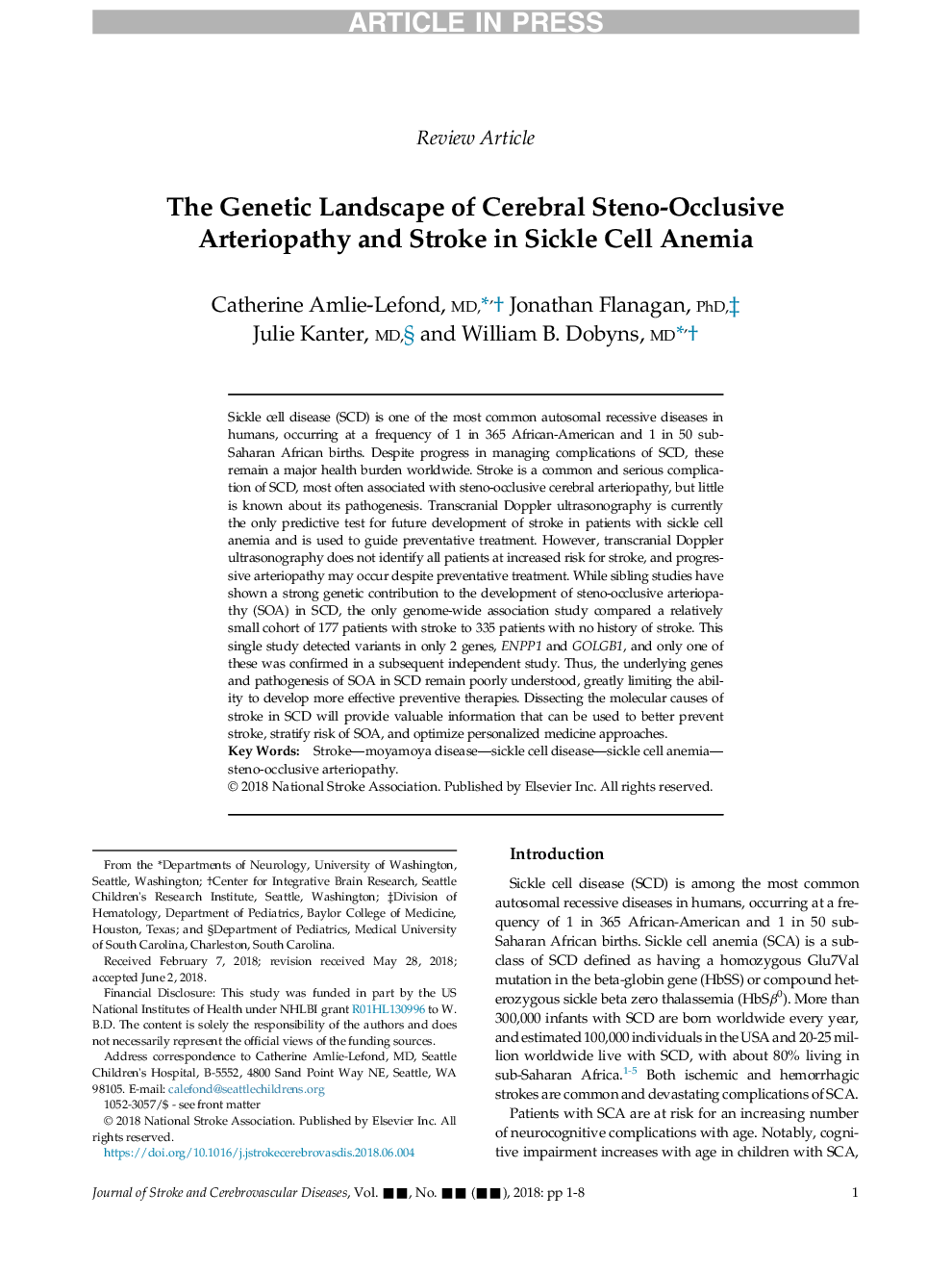| Article ID | Journal | Published Year | Pages | File Type |
|---|---|---|---|---|
| 11010509 | Journal of Stroke and Cerebrovascular Diseases | 2018 | 8 Pages |
Abstract
Sickle cell disease (SCD) is one of the most common autosomal recessive diseases in humans, occurring at a frequency of 1 in 365 African-American and 1 in 50 sub-Saharan African births. Despite progress in managing complications of SCD, these remain a major health burden worldwide. Stroke is a common and serious complication of SCD, most often associated with steno-occlusive cerebral arteriopathy, but little is known about its pathogenesis. Transcranial Doppler ultrasonography is currently the only predictive test for future development of stroke in patients with sickle cell anemia and is used to guide preventative treatment. However, transcranial Doppler ultrasonography does not identify all patients at increased risk for stroke, and progressive arteriopathy may occur despite preventative treatment. While sibling studies have shown a strong genetic contribution to the development of steno-occlusive arteriopathy (SOA) in SCD, the only genome-wide association study compared a relatively small cohort of 177 patients with stroke to 335 patients with no history of stroke. This single study detected variants in only 2 genes, ENPP1 and GOLGB1, and only one of these was confirmed in a subsequent independent study. Thus, the underlying genes and pathogenesis of SOA in SCD remain poorly understood, greatly limiting the ability to develop more effective preventive therapies. Dissecting the molecular causes of stroke in SCD will provide valuable information that can be used to better prevent stroke, stratify risk of SOA, and optimize personalized medicine approaches.
Related Topics
Health Sciences
Medicine and Dentistry
Clinical Neurology
Authors
Catherine MD, Jonathan PhD, Julie MD, William B. MD,
